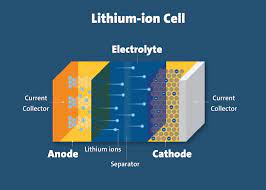Innovations in repurposing lithium-ion (Li-ion) batteries are emerging as a crucial aspect of promoting sustainability and environmental responsibility in the energy sector. As the demand for Li-ion batteries continues to surge, driven by the proliferation of electric vehicles (EVs), portable electronics, and renewable energy systems, so does the need for effective end-of-life management strategies. Repurposing, or second-life applications, of these batteries offers a promising solution to extend their usefulness beyond their initial service life, thereby reducing waste and conserving resources. This article explores the latest innovations and approaches in repurposing Li-ion batteries, highlighting their benefits and the challenges that lie ahead.

Understanding Battery Life Cycle
Li-ion batteries typically reach the end of their first life when they can no longer hold sufficient charge for their original application, usually around 70-80% of their initial capacity. However, at this point, they still possess enough capacity for less demanding applications, making them suitable candidates for repurposing.
Second-Life Applications
- Energy Storage Systems (ESS): Repurposed Li-ion batteries are finding a new lease on life in stationary energy storage systems. These systems store electricity generated from renewable sources, like solar and wind, to manage peak demand, provide backup power, and enhance grid stability. Given the lower energy density requirements compared to EVs, second-life batteries can effectively support these applications for several additional years.
- Portable Power Packs: Another innovative repurposing avenue is in portable power solutions, such as power banks for electronic devices and mobile power sources for camping or emergency services. These applications benefit from the portability and sufficient energy capacity of repurposed batteries.
- Community Projects: Repurposed batteries are also contributing to community energy projects in remote or underserved areas. They can store energy from small-scale solar installations, providing a reliable power source to communities with limited access to the grid.
Challenges and Solutions
Despite the potential, several challenges need to be addressed to maximize the benefits of repurposing Li-ion batteries:
- Standardization and Testing: The lack of standardization in battery formats and conditions presents a challenge in assessing and integrating repurposed batteries into new applications. Innovative solutions include developing standardized testing protocols to accurately assess battery health and performance.
- Safety Concerns: Safety is a paramount concern, as aging batteries can pose risks of thermal runaway and chemical leakage. Advances in safety technologies, such as improved battery management systems (BMS) and fault detection mechanisms, are essential for mitigating these risks.
- Regulatory and Economic Hurdles: Regulatory frameworks and economic models that support the repurposing industry are still in development. Policies that encourage the repurposing of batteries, alongside business models that make it economically viable, are critical for the industry’s growth.
Technological Innovations
Emerging technologies are playing a crucial role in overcoming the challenges associated with repurposing Li-ion batteries:
- Automated Sorting and Testing Systems: Automation in sorting and testing batteries based on their health and capacity can streamline the repurposing process, making it more efficient and cost-effective.
- Advanced Battery Management Systems: Innovations in BMS technology are improving the safety and performance of repurposed batteries by optimizing their operation and preventing failures.
- Blockchain for Traceability: Blockchain technology is being explored as a means to track the history and health of batteries, ensuring transparency and reliability in the repurposing supply chain.
The Road Ahead
As the repurposing of Li-ion batteries gains momentum, it presents an opportunity to create a more sustainable and circular economy for battery use. By extending the life of Li-ion batteries through innovative second-life applications, we can reduce environmental impact, conserve valuable materials, and meet the growing energy demands more sustainably. The continued advancement in technologies and frameworks supporting battery repurposing will be key to realizing this potential, marking a significant step towards a more resource-efficient future.
